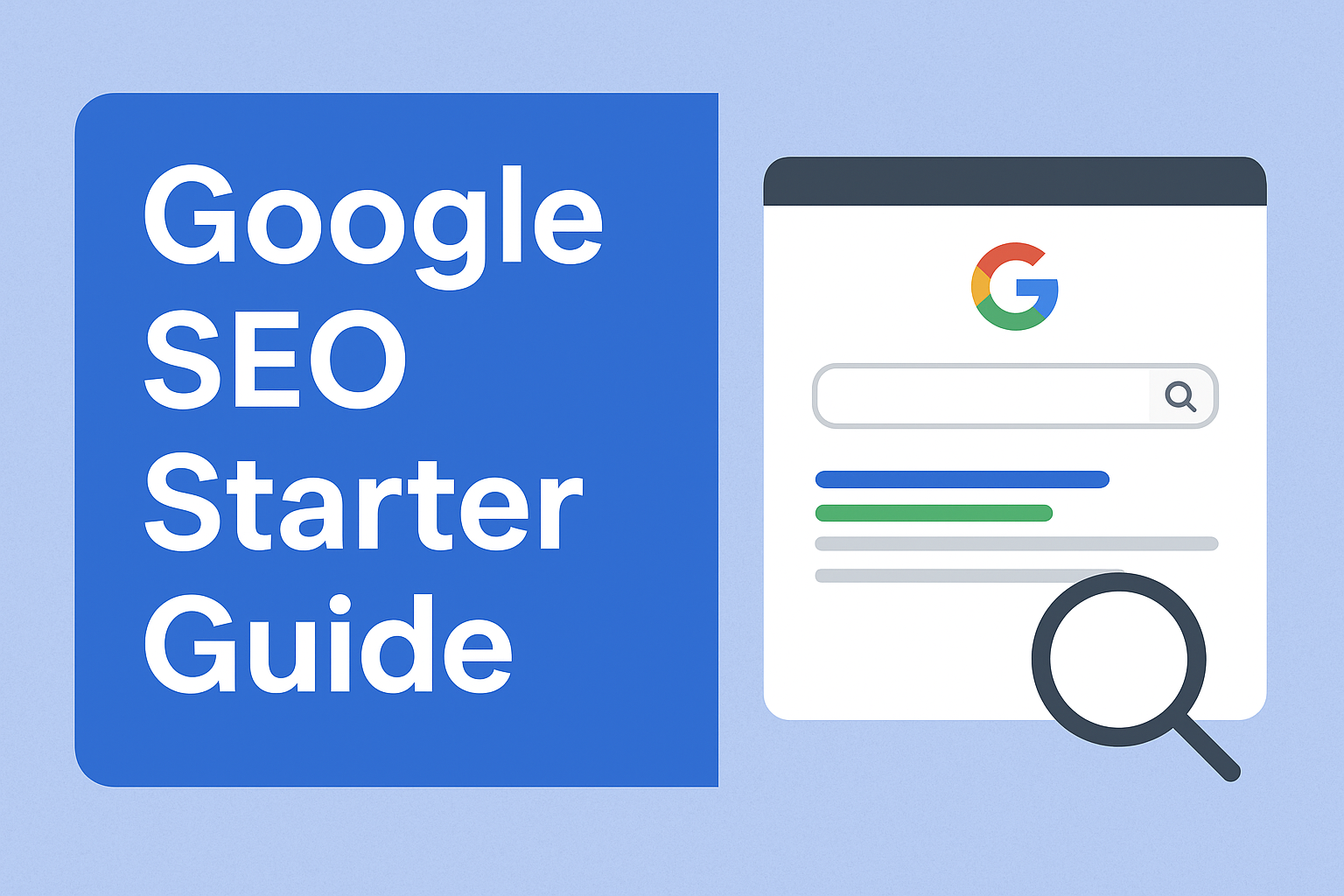In today’s digital world, everyone wants their website to rank higher on Google. To achieve this, it’s important to understand and apply Google’s SEO (Search Engine Optimisation) principles correctly. Google has published an official SEO Starter Guide for developers and website owners, which highlights the essentials of SEO. In this blog post, we’ll break down that guide in simple British English.
What is SEO and Why is it Important?
SEO, or Search Engine Optimisation, is the process of making your website more understandable and accessible to both search engines and users.
👉 The aim is not just to get rankings but to deliver the right information to the right audience at the right time.
👉 Good SEO increases your website’s visibility and helps you gain more traffic.
How Does Google Search Work?
Google uses special programmes called crawlers that scan web pages and add them to Google’s index. When a user searches, the indexed pages are displayed in the results.
⏳ SEO changes don’t show instant results. Some changes may show within hours, while others could take weeks or even months.
Getting Google to Discover Your Website
Your website will only appear on Google if Google can find and understand it. To ensure this:
Use the
site:yourdomain.comsearch operator to check if your site is indexed.Create and submit a Sitemap to Google.
Make sure important files (like CSS and JavaScript) are accessible.
Use the URL Inspection Tool to check how Google sees your site.
How to Structure Your Website
Both users and Google prefer a clear and organised structure.
✅ Descriptive URLs: /pets/cats.html is better than /2/6772.
✅ Directory Grouping: Place related pages in the same folder.
✅ Avoid Duplicate Content: Use Canonical tags or Redirects.
Creating High-Quality Content
According to Google, Content is King!
Always create original and unique content.
Present information in clear paragraphs with headings.
Content should be readable and trustworthy.
Keep updating old information or remove irrelevant content.
Using Keywords the Right Way
Think about what words your audience would search for.
Place keywords naturally in your content.
Avoid keyword stuffing (overusing keywords unnecessarily).
Making Your Website Attractive in Google Search Results
Title Tag: Write unique and engaging
<title>tags for each page.Meta Description: Write concise and relevant descriptions.
These two elements directly influence your CTR (Click-Through Rate).
Image and Video Optimisation
Always use alt text for images.
Ensure images and videos are high-quality and relevant.
Give videos proper titles and descriptions.
Promotion and Link Building
Promote your site through social media, blogging and other channels.
Link only to trusted websites.
For user-generated content (e.g. comments), use
nofollowattributes.
Things to Avoid
❌ Meta Keywords tags are outdated.
❌ Keyword stuffing is harmful.
❌ Keywords in domain names are less effective today.
❌ Duplicate content doesn’t cause penalties but provides no benefit either.
Essential Tools for SEO
Google Search Console – to monitor indexing and performance.
Google Analytics – to understand traffic and user behaviour.
SEO Plugins (Yoast/RankMath) – to set up SEO easily on WordPress sites.
Conclusion
Google’s SEO Starter Guide shows us that SEO is not magic; it’s a long-term strategy. By writing high-quality content, maintaining a proper website structure, and prioritising the user, your website can achieve better results on Google.
👉 If you’re looking for SEO and website management services, get in touch with us at WebJourny.com. We’ll help your website achieve better rankings on Google. 🚀

